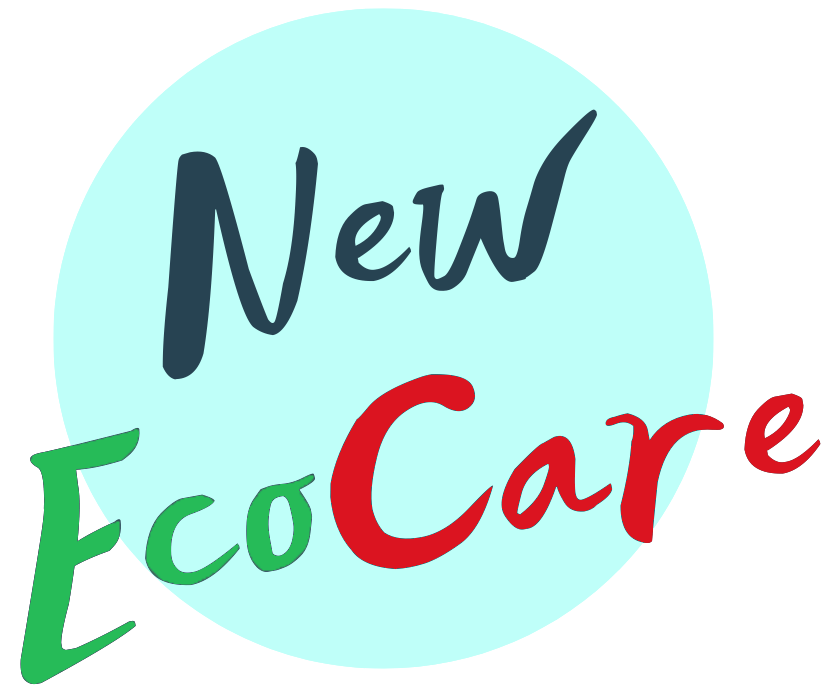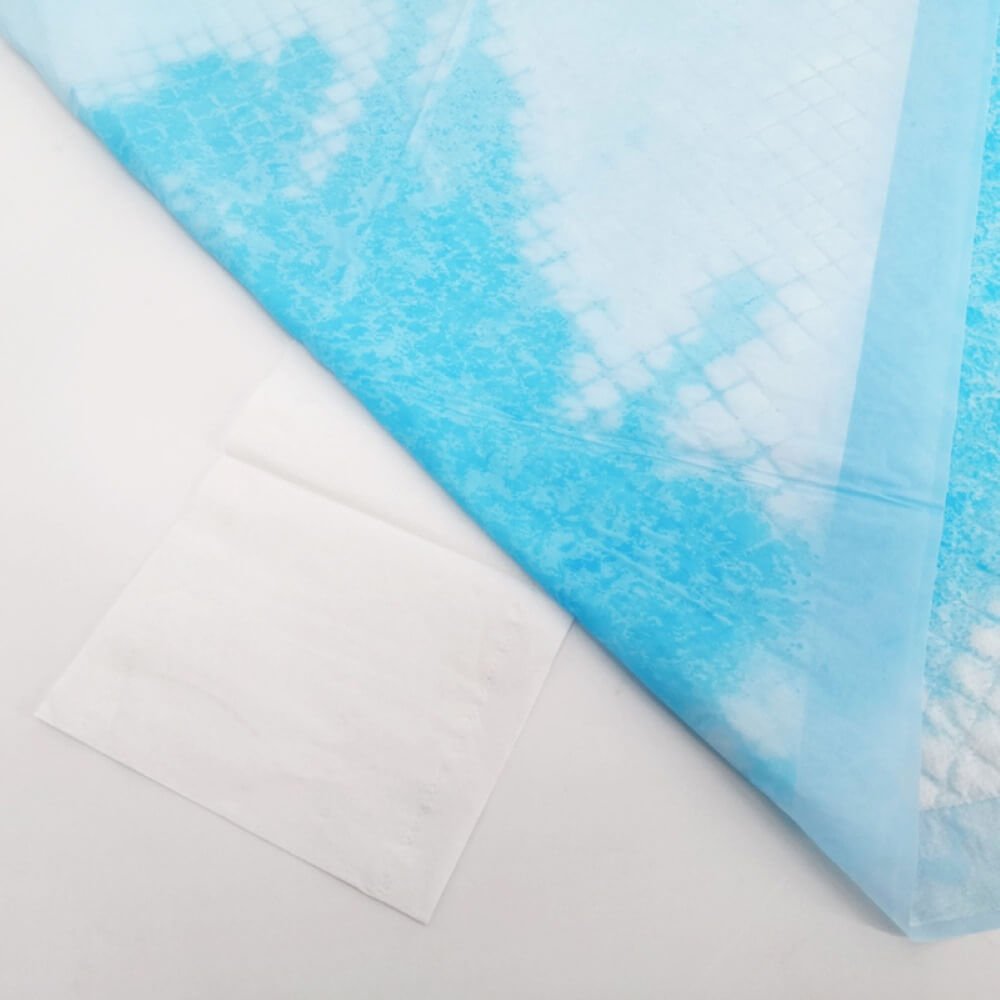Wenn es um den Umgang mit Inkontinenz geht, kann die Suche nach den richtigen Hilfsmitteln und Kenntnissen eine schwierige Situation in eine überschaubare und diskrete verwandeln. Zu den wichtigsten Hilfsmitteln für die Bewältigung dieses Zustands gehören Inkontinenz-Bettvorlagen. Sie bieten nicht nur Komfort und Schutz, sondern sichern auch die Würde der Betroffenen. Dieser Leitfaden befasst sich eingehend mit den verschiedenen Aspekten von Inkontinenzeinlagen, ihren Arten, Verwendungszwecken und den tiefgreifenden Vorteilen, die sie bieten. Mit Einblicken und Wissen aus erster Hand möchten wir Sie mit den notwendigen Informationen ausstatten, um fundierte Entscheidungen zu treffen und Ihre Lebensqualität oder die Ihrer Angehörigen zu verbessern.
Inhaltsübersicht
Inkontinenz-Bettauflagen verstehen
Was sind Inkontinenz-Bettauflagen?
Inkontinenzeinlagen sind Spezialeinlagen, die den auslaufenden Urin absorbieren und so die Matratze schützen und den Schlafbereich trocken und hygienisch halten. Diese Einlagen sind ein wichtiger Bestandteil bei der Behandlung von Harninkontinenz, insbesondere während der Nacht, wenn es zu einem längeren Kontakt mit Feuchtigkeit kommen kann. Inkontinenzeinlagen gibt es in verschiedenen Formen - als Einweg- und als wiederverwendbare Einlagen - die jeweils auf die unterschiedlichen Bedürfnisse und Vorlieben zugeschnitten sind.
Einwegpads werden häufig aus praktischen Gründen verwendet. Sie können nach dem Gebrauch weggeworfen werden, so dass sie nicht gewaschen werden müssen und schnell gewechselt werden können. Wiederverwendbare Binden hingegen, die in der Regel aus saugfähigen Materialien wie Baumwollmischungen bestehen und mit einer wasserdichten Unterlage versehen sind, können gewaschen und wiederverwendet werden. Wiederverwendbare Binden sind nicht nur kostengünstig, sondern auch umweltfreundlich.
Die Entscheidung zwischen Einweg- und Mehrwegprodukten kann von verschiedenen Faktoren abhängen, darunter die persönliche Vorliebe, der Schweregrad der Inkontinenz und Aspekte des Lebensstils, wie z. B. die Häufigkeit von Reisen oder die körperliche Fähigkeit, Wäsche zu waschen.
Arten von Inkontinenz-Bettauflagen
Die Vielfalt der auf dem Markt erhältlichen Inkontinenzeinlagen ermöglicht eine individuelle, auf die spezifischen Bedürfnisse des Benutzers zugeschnittene Versorgung. Zu den wichtigsten Typen gehören:
- Flache Pads: Das sind große, rechteckige Teile, die flach unter oder über dem Bettlaken liegen. Sie eignen sich für Personen, die sich im Schlaf nur wenig bewegen.
- Passende Pads: Ähnlich wie ein Spannbetttuch haben diese Auflagen elastische Ränder, die sich um die Matratze wickeln und zusätzliche Sicherheit bieten, da sie sich während der Nacht nicht so leicht verschieben können.
- Matratzenschoner: Diese decken die gesamte Matratze ab und werden oft mit einem Reißverschluss geschlossen. Sie bieten den umfassendsten Schutz, da sie auf allen Seiten gegen Undichtigkeiten schützen.
Jeder Polstertyp bietet ein unterschiedliches Maß an Schutz, Komfort und Benutzerfreundlichkeit, so dass es für praktisch jeden Bedarf eine Option gibt.
Zu beachtende Hauptmerkmale
Bei der Wahl der richtigen Inkontinenzeinlage geht es um mehr als nur um die Auswahl eines Typs. Hier finden Sie einige wichtige Merkmale, die die Wirksamkeit der Einlagen verbessern können:
- Absorptionsgrad: Je nach Schweregrad der Inkontinenz ist die erforderliche Saugfähigkeit unterschiedlich. Einige Einlagen können mehrere Liter Flüssigkeit aufnehmen, was ideal für den Gebrauch über Nacht oder bei schwerer Inkontinenz ist.
- Material: Die Materialien können den Komfort, die Saugfähigkeit und die Hautgesundheit beeinflussen. Die Auswahl reicht von natürlichen Fasern wie Baumwolle, die sanft zur Haut ist, bis hin zu synthetischen Materialien, die besonders saugfähig sind und schnell trocknen.
- Größe: Die Größe sollte für das Bett und den Schläfer geeignet sein. Größere Auflagen bieten mehr Schutz, können aber für kleinere Betten oder für Reisende unhandlich sein.
- Klebestreifen: Einige Einwegeinlagen sind an der Unterseite mit Klebestreifen versehen, die dafür sorgen, dass die Einlage die ganze Nacht über an ihrem Platz bleibt.
Mit diesen Überlegungen im Hinterkopf können Sie sich bei der Auswahl besser orientieren und eine Inkontinenzeinlage finden, die Ihren speziellen Bedürfnissen entspricht und Ihnen einen ruhigen und erholsamen Schlaf ermöglicht.
Die Auswahl der richtigen Inkontinenz-Bettauflage
Bei der Auswahl der idealen Inkontinenzeinlage kommt es nicht nur auf die Eigenschaften des Produkts an, sondern auch auf die persönlichen Umstände und den Lebensstil. Die richtige Wahl kann sowohl den Komfort als auch das Selbstvertrauen erheblich verbessern und den täglichen Umgang mit Inkontinenz wesentlich vereinfachen.
Zu berücksichtigende Faktoren
Bei der Auswahl einer Inkontinenzeinlage sollten mehrere Faktoren Ihre Entscheidung beeinflussen, darunter:
- Grad der Inkontinenz: Die Menge und Häufigkeit des Auslaufens spielen eine entscheidende Rolle. Bei stärkerer Inkontinenz sind möglicherweise Einlagen mit höherer Saugfähigkeit oder ein vollständiger Matratzenschutz erforderlich.
- Mobilität der Nutzer: Für Personen mit eingeschränkter Mobilität sind festsitzende Matratzenauflagen oder Matratzenschoner, die sicher an ihrem Platz bleiben, ideal, um Verschiebungen zu verhindern, die zu Undichtigkeiten führen könnten.
- Empfindlichkeit der Haut: Wenn Hautreizungen ein Problem darstellen, kann die Wahl einer Einlage aus hypoallergenem und atmungsaktivem Material helfen, Komplikationen wie Dermatitis zu vermeiden.
Die Kenntnis dieser Faktoren trägt dazu bei, die Wahl auf die spezifischen Bedürfnisse des Nutzers abzustimmen und einen optimalen Schutz und eine einfache Handhabung zu gewährleisten.
Bewährte Praktiken bei der Auswahl von Bettauflagen
Um das beste Inkontinenz-Bettpolster zu finden, sollten Sie diese bewährten Verfahren beachten:
- Experimentieren Sie mit verschiedenen Marken und Typen: Was für den einen gut ist, muss für den anderen nicht gut sein. Das Ausprobieren verschiedener Produkte kann Ihnen helfen, das perfekte Produkt für Ihre speziellen Bedürfnisse zu finden.
- Lesen Sie Nutzerbewertungen: Die Erfahrungen anderer Nutzer können wertvolle Erkenntnisse über die Wirksamkeit und den Komfort eines Produkts liefern.
- Konsultieren Sie Gesundheitsdienstleister: Fachleute können Ihnen auf der Grundlage Ihrer Krankengeschichte und des Schweregrads der Inkontinenz Ratschläge geben.
Wenn Sie diese Praktiken berücksichtigen, können Sie eine Bettauflage wählen, die nicht nur Ihren funktionellen Bedürfnissen entspricht, sondern auch Ihre Lebensqualität erhöht.
Nutzung und Wartung
Die richtige Verwendung und Pflege von Inkontinenzeinlagen ist der Schlüssel zur Maximierung ihrer Wirksamkeit und Lebensdauer. Hier erfahren Sie, wie Sie sicherstellen können, dass Sie das Beste aus Ihren Bettvorlagen herausholen.
Verwendung von Inkontinenz-Bettvorlagen
Die richtige Platzierung und der routinemäßige Wechsel sind entscheidend:
- Platzierung: Vergewissern Sie sich, dass die Einlage an der Stelle richtig platziert ist, an der sie am ehesten auslaufen kann. Vergewissern Sie sich, dass die Einlagen eng an der Matratze anliegen.
- Routinemäßige Änderungen: Wechseln Sie die Einlagen nach Bedarf, um Hautreizungen und Geruch zu vermeiden. Je nach Schweregrad der Inkontinenz kann dies einmal pro Nacht oder häufiger geschehen.
Wenn Sie diese einfachen Schritte befolgen, kann die Wirksamkeit der Betteinlagen erheblich verbessert werden.
Tipps zur Reinigung und Pflege
Bei wiederverwendbaren Pads ist eine ordnungsgemäße Reinigung unerlässlich:
- Waschen: Die meisten wiederverwendbaren Binden sind waschmaschinenfest. Waschen Sie sie gemäß den Anweisungen des Herstellers, normalerweise mit einem milden Waschmittel und im Schonwaschgang.
- Trocknen: Es wird empfohlen, die Pads an der Luft zu trocknen, um ihre Lebensdauer zu verlängern, viele können aber auch bei geringer Hitze im Wäschetrockner getrocknet werden.
Wenn Sie sich an diese Pflegetipps halten, bleiben Ihre wiederverwendbaren Binden hygienisch und effektiv.
Überlegungen zu Gesundheit und Komfort
Inkontinenz kann mehr als nur Ihren Schlaf beeinträchtigen - sie kann sich auf Ihre allgemeine Gesundheit und Ihr Wohlbefinden auswirken. Die Verwendung der richtigen Inkontinenzeinlagen kann einige dieser Auswirkungen abmildern.
Vorteile für die Nutzer
Zu den wichtigsten Vorteilen der Verwendung von Inkontinenzeinlagen gehören:
- Schutz: Hochwertige Bettauflagen schützen die Matratze und andere Bettwaren, verringern die Häufigkeit der Wäsche und sorgen für Hygiene.
- Komfort: Mit der richtigen Einlage kann der Schlaf nicht durch die Sorge um Auslaufen unterbrochen werden, was zu einer besseren allgemeinen Gesundheit und einem besseren Wohlbefinden führt.
- Zuversicht: Die Gewissheit, dass Sie geschützt sind, verringert die Angst vor Inkontinenz, insbesondere wenn Sie in einer neuen oder gemeinsamen Umgebung schlafen.
Potenzielle Gesundheitsprobleme der Haut
Betteinlagen sind zwar nützlich, können aber bei unsachgemäßer Verwendung auch Risiken bergen:
- Hautreizung: Längerer Kontakt mit Feuchtigkeit kann zu Hautreizungen oder Infektionen führen. Die Wahl atmungsaktiver Materialien und das häufige Wechseln der Binden können dies abmildern.
- Allergische Reaktionen: Einige der in Betteinlagen verwendeten Materialien können allergische Reaktionen hervorrufen. Wenn Sie sich für hypoallergene Materialien entscheiden, können Sie diese Probleme vermeiden.
Wenn Sie wissen, wie Sie Nutzen und Risiken von Inkontinenzeinlagen gegeneinander abwägen können, können Sie sie effektiv einsetzen und sicherstellen, dass sowohl Gesundheit als auch Komfort erhalten bleiben.
Innovationen bei Inkontinenz-Bettauflagen
Auf dem Markt für Inkontinenzprodukte sind erhebliche Fortschritte bei Design und Materialien von Bettvorlagen zu verzeichnen, die auf ein wachsendes Bewusstsein für die Bedürfnisse der Nutzer und Umweltbelange zurückzuführen sind. Die Innovationen verbessern die Lebensqualität der Nutzer und drängen die Branche zu nachhaltigeren Praktiken.
Neueste Technologien bei der Gestaltung von Bettauflagen
Neue Technologien bei Inkontinenzeinlagen konzentrieren sich auf die Verbesserung von Komfort, Saugfähigkeit und Hautgesundheit:
- Superabsorbierende Polymere (SAPs): Diese Materialien können ein Vielfaches ihres Gewichts an Flüssigkeit absorbieren und schließen sie ein, um die Haut trocken zu halten.
- Atmungsaktive, wasserdichte Schichten: Moderne Binden sind oft mit Membranen ausgestattet, die Flüssigkeiten blockieren, aber Luft durchlassen, wodurch das Risiko eines Hitzestaus und von Hautproblemen verringert wird.
- Technologien zur Geruchskontrolle: Einige Binden sind mit geruchsneutralisierenden Chemikalien behandelt oder bestehen aus Materialien, die Gerüche auf natürliche Weise minimieren und die Würde des Benutzers verbessern.
Diese technologischen Fortschritte verbessern nicht nur die Funktionalität der Betteinlagen, sondern tragen auch zu größerer Zufriedenheit und höherem Komfort der Benutzer bei.
Umweltverträgliche Optionen
Da Umweltbelange immer wichtiger werden, reagieren die Hersteller mit umweltfreundlicheren Optionen:
- Biologisch abbaubare Materialien: Einige Unternehmen entwickeln Binden aus biologisch abbaubaren Fasern, die sich schneller abbauen als herkömmliche Materialien.
- Wiederverwendbare Produkte: Wiederverwendbare Betteinlagen, die bereits eine nachhaltigere Wahl sind, werden aus organischen und recycelten Materialien hergestellt, um ihre Umweltauswirkungen weiter zu verringern.
Die Wahl umweltfreundlicher Produkte hilft nicht nur bei der Bewältigung von Inkontinenz, sondern trägt auch zu einem geringeren ökologischen Fußabdruck bei.
Persönliche Geschichten und Zeugnisse
Persönliche Geschichten von Menschen, die mit Inkontinenz zurechtkommen, können beruhigend wirken und praktische Einsichten vermitteln. John, ein pensionierter Lehrer, erzählt zum Beispiel:
"Ich habe mir wegen meiner Inkontinenz immer Sorgen um Übernachtungsreisen gemacht. Seit ich die neuen atmungsaktiven Betteinlagen benutze, schlafe ich besser, weil ich weiß, dass ich nicht mit einer Sauerei aufwachen werde. Sie halten wirklich die Feuchtigkeit von meiner Haut fern, und ich fühle mich morgens ausgeruhter."
Diese Geschichten heben die Vorteile von Innovationen in der Betteinlagen-Technologie in der Praxis hervor und können neuen Nutzern bei der Auswahl helfen.
Vergleichende Analyse
Vergleich von Marken und Materialien
Bei der Auswahl einer Inkontinenzeinlage ist es wichtig, nicht nur die Marken, sondern auch die verwendeten Materialien zu vergleichen. Zum Beispiel:
- Marke A verwendet eine gesteppte Oberschicht, die sich weicher auf der Haut anfühlt, ideal für Menschen mit Empfindlichkeitsproblemen.
- Marke B bietet einen Hightech-Polymerkern, der eine hervorragende Saugfähigkeit bei schwerer Inkontinenz bietet.
Jede Marke und jeder Materialtyp bringt etwas anderes mit sich, und wenn Sie diese Nuancen kennen, können Sie die perfekte Lösung für Ihre Bedürfnisse finden.
Kostenerwägungen und Wert
Die Behandlung von Inkontinenz ist mit laufenden Kosten verbunden, aber die richtige Betteinlage kann im Laufe der Zeit einen erheblichen Nutzen bringen.
Wie man das Preis-Leistungs-Verhältnis ermittelt
Beachten Sie die folgenden Punkte, um sicherzustellen, dass Sie das beste Preis-Leistungs-Verhältnis erhalten:
- Langlebigkeit und Beständigkeit: Wiederverwendbare Binden sind zwar im Voraus teurer, können aber im Vergleich zu Einwegprodukten auf Dauer wirtschaftlicher sein.
- Absorptionsfähigkeit vs. Kosten: Höher saugfähige Einlagen sind in der Regel teurer, bieten aber möglicherweise einen besseren Schutz und müssen seltener gewechselt werden.
- Großeinkauf: Wenn Sie die Pads in großen Mengen kaufen, können Sie die Kosten pro Einheit senken, was hochwertige Optionen erschwinglicher macht.
Durch eine sorgfältige Abwägung von Kosten und Nutzen können Sie eine Bettauflage wählen, die nicht nur Ihren Bedürfnissen entspricht, sondern auch in Ihr Budget passt.
Inkontinenzeinlagen sind ein entscheidender Faktor bei der effektiven Behandlung von Inkontinenz und bieten Schutz, Komfort und Vertrauen. Ganz gleich, ob Sie Wert auf Saugfähigkeit, Umweltfreundlichkeit oder Hautempfindlichkeit legen, es gibt eine Vielzahl von Optionen, die Ihren Bedürfnissen entsprechen. Durch Innovationen in den Bereichen Technologie und Materialien werden diese Produkte immer weiter verbessert, sodass sie effektiver und komfortabler sind als je zuvor. Mit der Wahl der richtigen Betteinlage können Sie nicht nur für einen guten Schlaf sorgen, sondern auch für eine höhere Lebensqualität.

